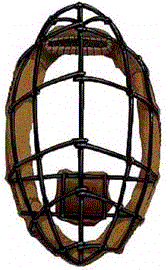| |
The following is an abbreviated evolution of the pitching distance, rules governing pitching motion, and catcher's
location:
PITCHER'S LOCATION
Prior to 1893 the pitcher's location was marked by a rectangle. It's size as well as the distance from home plate, varied over time -
1863 - 6 ft. wide X 12 feet deep
1867 - 6 ft. X 6 ft.
1879 - 4 ft. X 6 ft.
1885 - 4 ft. X 7 ft.
1887 - 4 ft. X 6.5 ft.
1893 - box eliminated and replaced by slab (4 inches wide and 12 inches long)
1895 - Slab changed to 6 in. X 24 in. (Present day dimensions).
PITCHING DISTANCE
1863 - 45 ft. from front line of pitcher's box to rear of home plate
1881 - 50 ft.
1887 - 55.5 ft.
1890 - 57 ft. (Player's League Only)
1893 - 60.5 ft. (Present Day Distance)
PITCHING MOTION
1845 - Underhand and must keep wrist stiff
1872 - Pitcher allowed to snap wrist making horizontal curve line
1879 - Pitcher prohibited from turning his back completely to batter during delivery
1884 - Side arm pitching motion allowed
1885 - Overhand pitching motion allowed (NL Only), both feet on ground during delivery
1887 - Pitcher must start delivery with one foot on back line of box
All of these changes were attempts to find the proper balance between hitting and pitching. Changing the pitching distance and pitcher's motion greatly affected a catcher's ability to cleanly field the ball. It also altered where a catcher stood. As early as the 1860's the catcher selectively moved up directly behind the batter, especially with runner(s) on base. The usual catcher location was some 20-30 feet deep behind the batter. Obviously any runners would advance with impunity if the catcher continued to stand that far back, especially with the variety of pitching motions, distances and ball speeds. In 1901 the rules were changed making the catcher play within 10 feet of the batter.
|
|




